Have you ever asked yourself: “Is my work relevant to anyone out there? Is it needed? Does anyone care?” Or, “It’s meaningful to me. Why is it that no one cares??”

By Robert Gerlach, Creativity Educator, Author & Keynote Speaker
Welcome to the club! I asked myself lately about the relevance of my work. Particularly after a keynote, I gave last Wednesday in Munich. I felt like, although I was talking about new revelations on creativity in the workplace, I was not really touching the audience. Yes, afterward some managers told me that my talk corroborated them in their endeavors to build an inspiring atmosphere. But as far as I’m concerned, I wasn’t satisfied with my job. Why? Because I only sold one copy of Innovator’s High – a how-to guide on creativity. One out of 25? Hmm, if I were to be a salesman, I would most likely be without a job today. My first reaction, of course, was being angry and frustrated. I knew I didn’t sell lots of copies because of the content of my book. I wholeheartedly believe in the new insights on creative thinking this jam-packed book has to offer, such as a study about the #1 reason why people have their best ideas on the job, which has been published in Harvard Business Manager. Or, an unknown secret behind the innovators Leonardo da Vinci and Steve Jobs. It was only when I went for a walk the next day in the woods, that I discovered the real problem why people weren’t crazy about buying my book.
Do not doubt your (art)-work
Why am I writing to you all that? (Whenever the word “you” appears in my writing, know that I include myself as well.) Because very often we doubt ourselves, we doubt about our work and our impact on others. We may be excited about the stuff we do and still feel disappointed because no one buys into it. But here is the catch: if customers don’t want our product or service, it’s not because what we do is not relevant to them, it’s because we don’t know how to present our idea to them! People are pretty much the same all over the world. We all want love. We all want a better life. We all want to do something meaningful. So, why shouldn’t what is meaningful to us be relevant to others?
Creators & Innovators
Instead of doubting our (art)-work, why not reflect on our skills to advertise the work? After all, a creator by nature isn’t necessarily a marketing genius. Just imagine Vincent van Gogh, standing in a gallery and selling his paintings. That’s why it takes two to tango. Someone to create and someone to sell. I’d like to distinguish those two types of people into CREATORS and INNOVATORS. While a creator is talented in searching and finding the new, an innovator is gifted in articulating his vision to people as well as selling it. For instance, Apple co-founder Steve Wozniak was a genius in programming. He single-handedly developed the Apple I in 1976. His buddy Steve Jobs was a genius in seeing opportunities. While “Woz” wasn’t into big business (He simply wanted to impress his friends.), Jobs understood how to get people excited about his vision.
Selling is about understanding
But what if you do not have a charismatic marketing guy at your side who exposes you and usher you into your greatness? What if you have to sweet-talk your way through to close a deal? And why not? The big tech guys like Mark Zuckerberg, Elon Musk, or Jeff Bezos have all mastered the art of inventing and selling at the same time. Famous designers like Hartmut Esslinger, David Kelley, or the King of fashion, Karl Lagerfeld have all understood how to market their designs.
But, what is it they have understood? The customers. Very often creators present their work purely from their point of view and feel shoddy if no one understands them. But instead of wading through a river of tears, they could as well try to understand their customer’s needs and wants first, and then present their work. Chances are, once you know what the audience wants, you are more likely to sell your stuff and even more, produce great artwork people will actually use. Understanding the audience is instrumental for every creator. Let’s listen to director Steven Spielberg and his success formula, “My early movies were all about you. My early movies were all soliciting you. Making you my partners. Thinking about you behind the camera. Thinking what would turn you on? What would get you excited? What would make you laugh? What would make you scream? […] And you, you were my partners. My audience. I collaborated with you. You collaborated with me.”
Don’t get me wrong. I’m not advocating to start your artwork from the customer’s perspective like it’s done in the creativity technique Design Thinking. In Design Thinking, much emphasis is put on empathy, which revolves around understanding people and their behavior in order to design human-centered products. But what about the creator?’ Altruistically devoting oneself to sensing customer’s needs is noble, but ignores the importance of one’s own desires. Therefore, two perspectives have to be taken into account to create something meaningful for yourself and for others.
The creator’s perspective
“Don’t ask what the world needs. Ask what makes you come alive, and go do it. Because what the world needs is people who have come alive!” – Howard Thurman
The first perspective is all about you! What drives you? What do you want? What are you longing for? Finally, it all comes down to what you want to achieve. It’s your initial intention that defines the energy you’ll pour into the project. If your intention is not clear to you, the energy will be low and your work will be lacking meaning.
The innovator’s perspective
“An entrepreneur that isn’t interested in selling stuff, isn’t an entrepreneur!” – Eric Worre
Second, switch your perspective. Try to understand the customer. Carefully listen to the needs/wants of the people around you. They could be your customers. Instead of responding “This is how I see it!”, try to see the situation from their standpoint. Ask questions. Feel what they long for. Then, combine the two perspectives to create a compelling vision.
It is instrumental to have your own perspective because your enthusiasm is what customers will buy too. But, it is only when you combine both perspectives, that the recognition will end up following you.
If you would like to dig deeper into creative thinking, have a look at my book Innovator’s High. This how-to guide provides new insights on creativity, such as >> the #1 reason why people have their best ideas on the job >> how to transform negative feelings into creative power >> why great artists never steal and >> how to find ideas during crunch time.
Get Innovator’s High on Amazon.com // Amazon.de






I’ll leave it to you to decide which one fits you best. You may even see a little of yourself in more than one group. But remember, none of these are bad. All play crucial roles in developing an idea, pushing it up the corporate channels, developing a strategy and overseeing execution and implementation. These are all pieces of a puzzle, arteries leading to the beating heart of corporate innovation. Wow – can I make that sound any more dramatic?